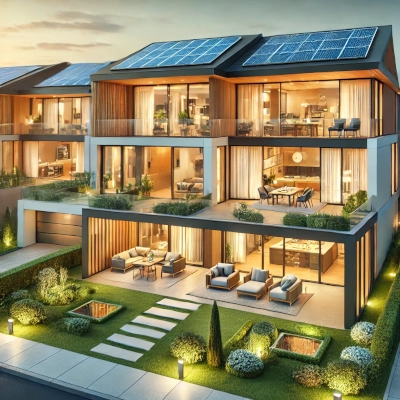The Rise of Multigenerational Living: How Real Estate is Adapting in 2025
Introduction: A New Era of Living Together
In 2025, the real estate landscape is shifting dramatically as multigenerational living becomes the new norm. Families are choosing to live together under one roof, blending generations for economic, emotional, and practical reasons. With skyrocketing housing costs, aging parents needing care, and younger generations struggling with affordability, real estate is rapidly adapting to meet this growing demand.
This article explores the rise of multigenerational living, why it’s becoming a trend, and how developers, architects, and homeowners are reshaping properties to accommodate extended families.
Market Demand: Why Multigenerational Homes Are on the Rise
Economic Considerations
- With rising property prices and higher mortgage rates, pooling resources has become a financially wise decision.
- Families can split homeownership costs, reducing individual financial burdens.
- In many cultures, multigenerational living has always been the norm, and this trend is now gaining traction globally.
Aging Population & Family Support
- Baby boomers are retiring, and many prefer to live with family instead of assisted living facilities.
- Younger adults are staying with parents longer due to career uncertainties and student debt.
- The pandemic reinforced the importance of close-knit family structures, driving demand for homes that support multiple generations.
Flexibility & Space Optimization
- Home designs are evolving to include separate entrances, in-law suites, dual kitchens, and private living spaces.
- Builders are integrating accessory dwelling units (ADUs), granny flats, and co-living spaces.
- Properties with dual-purpose layouts are now a hot commodity in the real estate market.
How Real Estate is Adapting
Innovative Home Designs
Real estate developers are responding to the demand with innovative home designs that cater to multigenerational families:
- Self-Contained Suites: Private sections with bedrooms, kitchens, and bathrooms.
- Dual Kitchens & Living Areas: Allowing independent yet connected living.
- Smart Homes: AI-driven solutions for managing shared spaces efficiently.
- Soundproofing & Privacy Features: Ensuring personal space while living together.
The Role of Smart Homes & Technology
- Home automation systems make it easier to manage energy consumption across multiple living spaces.
- AI-powered security systems provide safety without compromising privacy.
- Shared home management apps allow families to coordinate bills, chores, and shared spaces efficiently.
Investment & Resale Value
- Multigenerational homes offer higher resale value due to their versatility.
- Rental opportunities: Homeowners can rent out extra space if family members move out.
- Governments and financial institutions are introducing incentives and flexible mortgage options for such properties.
Future Outlook: What’s Next for Multigenerational Living?
- More Developers Entering the Market: We will see an increase in builders creating homes specifically for multigenerational families.
- Sustainability & Green Living: Eco-friendly materials and energy-efficient designs will be incorporated into shared housing.
- Increased Policy Support: Governments may offer tax benefits and zoning law changes to support multigenerational home construction.
Conclusion: A Win-Win Housing Solution
The future of real estate is evolving, and multigenerational living is at the forefront of this transformation. By offering economic relief, fostering stronger family bonds, and maximizing home utility, this trend is here to stay.
Whether you’re an investor, homeowner, or someone planning for the future, understanding this shift in real estate can help you make informed decisions. Want to explore multigenerational living options? Master1 Real Estate is here to help you find the perfect home that suits your family’s unique needs.
📚 References
- Real Estate Market Trends 2025
- Smart Home Technology & Its Role in Multigenerational Homes
- Financial Benefits of Co-Living Spaces
- The Impact of Aging Population on Housing
- The Role of AI in Real Estate
- Sustainable Housing Trends
- Government Support for Multigenerational Homes
© Copyright 2025 Master1 Real Estate. All Rights Reserved. This article, including all text, images, and media content, is the intellectual property of Master1 Real Estate and is protected under international copyright laws. Unauthorized reproduction, distribution, or modification of any content without prior written permission is strictly prohibited.

 AR
AR  EN
EN 